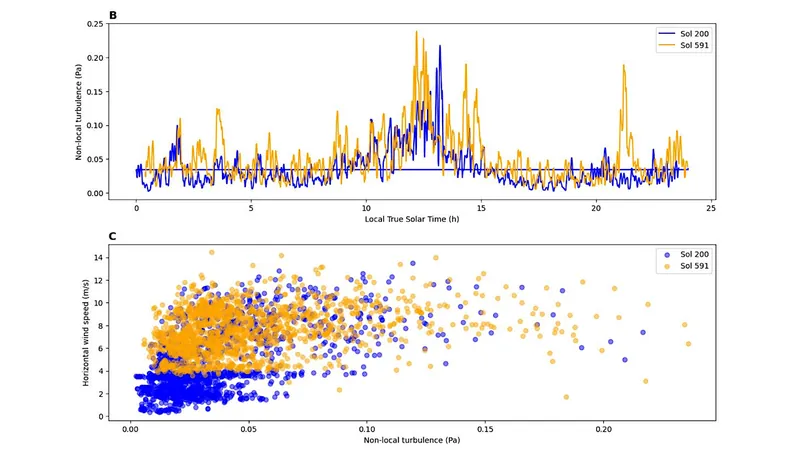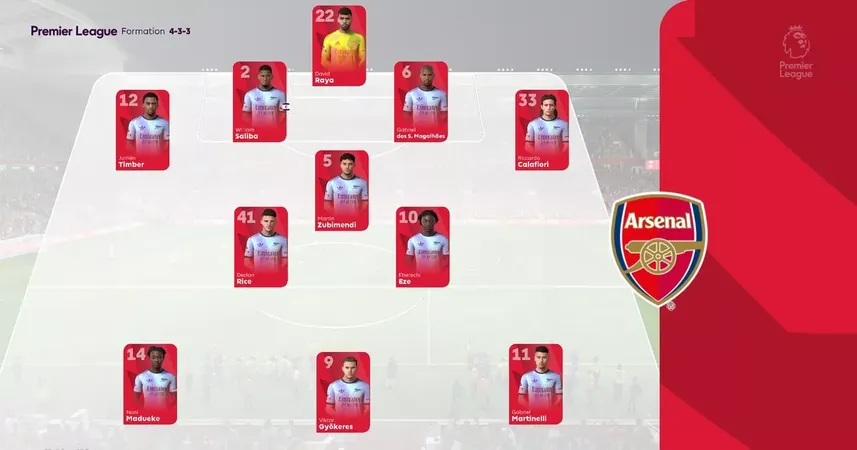
Revolutionizing Geoscience: Meet IDEA, Your New AI Assistant!
2025-08-12
Author: Wei
Groundbreaking AI Meets Geoscience Exploration
Imagine having an AI assistant at your fingertips, ready to analyze complex scientific data and simplify your research. Researchers at the University of Hawai‘i (UH) at Mānoa have made this dream a reality with their Innovative Data Exploring Assistant (IDEA), designed to help scientists seamlessly tackle everything from rising sea levels on Earth to atmospheric analysis on Mars.
IDEA: Your New Research Sidekick
IDEA combines the cutting-edge capabilities of large language models, akin to those powering ChatGPT, with curated scientific data and tailored computational tools. This means researchers can simply type in their questions in everyday language, and IDEA can fetch data, run analyses, create informative plots, or assess its results within minutes.
Matthew Widlansky, the lead author and associate director at UH's Sea Level Center, expressed enthusiasm about the tool's ease of use: "We’ve created a prototype that empowers scientists to receive working code, clear explanations, and publication-level figures without needing extensive technical knowledge."
Diving Deeper with the Station Explorer Assistant (SEA)
Building on the IDEA framework, the Station Explorer Assistant (SEA) takes focus on global sea level data. With SEA, users can analyze tide gauge records, monitor sea level fluctuations, or evaluate flood risks—all without writing a single line of code. Widlansky stated, "This is a game changer for researchers and students alike, allowing them to explore coastal changes interactively."
Versatility and Future Potential of IDEA
The versatility of IDEA is striking. Komar, co-author and software engineer, highlighted, "We even adapted it to analyze Martian dust storms simply by changing the dataset and instructions." While the power of AI aids in analysis, researchers remind users to remain vigilant: "AI can make mistakes; human oversight is crucial. We seek to assist, not replace, the valuable work of scientists."
Seamless Integration of AI and Geoscience
To build SEA, the team integrated an OpenAI language model with data from the UH Sea Level Center, creating a secure environment where AI can operate efficiently. This allows users to easily analyze coastal data without the tech jargon, revealing how rising sea levels and high-tide flooding may shape the planet's coastlines.
The Future of IDEA and Scientific Collaboration
While SEA currently focuses on sea level data, the IDEA framework is adaptable across various geoscience fields, from ocean forecasting to planetary science. Available online, this prototype invites collaboration and testing from scientists and students, opening doors for further innovation and feedback to enhance its applications.
Looking ahead, the team's vision for IDEA is ambitious, with plans for automated error checks, support for diverse data sources, and tools to help users create custom solutions for various geoscience challenges. Widlansky and Komar are passionate about making scientific exploration more accessible for individuals in Hawai‘i and beyond, demonstrating how AI can fuel discovery and knowledge in the geosciences.


 Brasil (PT)
Brasil (PT)
 Canada (EN)
Canada (EN)
 Chile (ES)
Chile (ES)
 Česko (CS)
Česko (CS)
 대한민국 (KO)
대한민국 (KO)
 España (ES)
España (ES)
 France (FR)
France (FR)
 Hong Kong (EN)
Hong Kong (EN)
 Italia (IT)
Italia (IT)
 日本 (JA)
日本 (JA)
 Magyarország (HU)
Magyarország (HU)
 Norge (NO)
Norge (NO)
 Polska (PL)
Polska (PL)
 Schweiz (DE)
Schweiz (DE)
 Singapore (EN)
Singapore (EN)
 Sverige (SV)
Sverige (SV)
 Suomi (FI)
Suomi (FI)
 Türkiye (TR)
Türkiye (TR)
 الإمارات العربية المتحدة (AR)
الإمارات العربية المتحدة (AR)